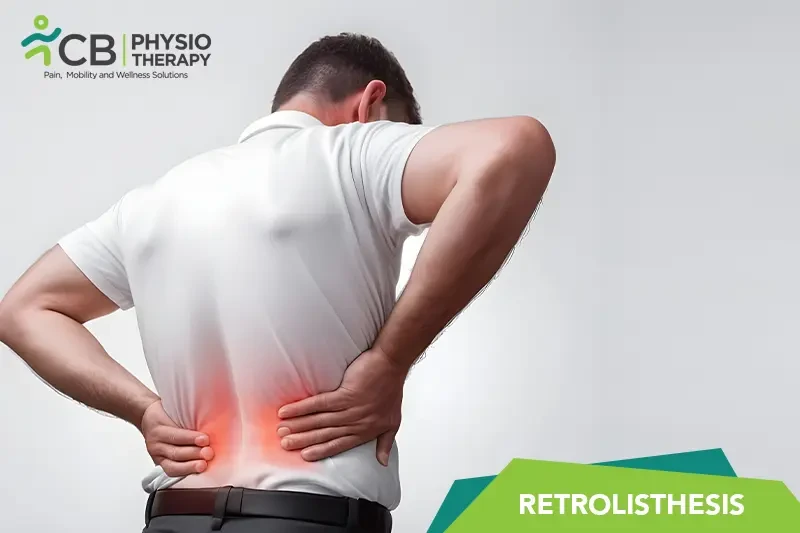फिजियोथेरेपिस्ट अक्सर दर्द को प्रबंधित करने, सूजन को कम करने और रेट्रोलिस्थीसिस वाले रोगियों में उपचार को बढ़ावा देने के लिए विभिन्न विद्युत विधियों का उपयोग करते हैं।
थर्मोथेरेपी / क्रायोथेरेपी:
गर्मी/ठंडे पैक का उपयोग, दर्द को दूर करने और गति की सीमा को बढ़ाने में मदद कर सकता है।.
ट्रांसक्यूटेनियस इलेक्ट्रिकल नर्व स्टिमुलेशन (TENS):
TENS तंत्रिका तंतुओं को उत्तेजित करने के लिए त्वचा के माध्यम से कम वोल्टेज वाली विद्युत धाराएँ पहुँचाता है, जो मस्तिष्क को दर्द के संकेतों को रोकने और एंडोर्फिन के स्राव को बढ़ावा देने में मदद कर सकता है। दर्द वाले क्षेत्र पर त्वचा पर इलेक्ट्रोड लगाए जाते हैं, और रोगी को झुनझुनी सनसनी महसूस होती है।
इंटरफेरेंशियल करंट थेरेपी (IFC):
IFT दो उच्च-आवृत्ति वाली विद्युत धाराओं का उपयोग करता है जो ऊतकों के भीतर गहराई से प्रतिच्छेद करती हैं। इन धाराओं के हस्तक्षेप से कम आवृत्ति वाली धारा उत्पन्न होती है जो TENS की तुलना में ऊतकों में अधिक गहराई तक प्रवेश करती है।
अल्ट्रासाउंड थेरेपी:
US ऊतकों की हीलिंग को बढ़ावा देने, दर्द और सूजन को कम करने में मदद करता है। यह ऊतकों के भीतर गहरी गर्मी पैदा करने के लिए उच्च आवृत्ति वाली ध्वनि तरंगों का उपयोग करता है, जो रक्त प्रवाह को बढ़ाता है, मांसपेशियों को आराम देता है और हीलिंग को बढ़ावा देता है। जेल को त्वचा पर लगाया जाता है, और प्रभावित क्षेत्र पर एक हैंडहेल्ड अल्ट्रासाउंड डिवाइस को घुमाया जाता है।
इलेक्ट्रोमायोग्राफिक बायोफीडबैक (EMG):
EMG मांसपेशियों की गतिविधि का पता लगाने के लिए इलेक्ट्रोड का उपयोग करता है और रोगी को प्रतिक्रिया प्रदान करता है। इससे रोगियों को यह सीखने में मदद मिलती है कि मांसपेशियों के तनाव को कैसे नियंत्रित किया जाए और मांसपेशियों के कार्य को कैसे बेहतर बनाया जाए। इलेक्ट्रोड को मांसपेशियों के ऊपर त्वचा पर रखा जाता है, और रोगी को दृश्य या श्रवण प्रतिक्रिया मिलती है।
इलेक्ट्रिकल मसल स्टिमुलेशन (EMS):
EMS मांसपेशियों को मजबूत बनाने और दर्द से राहत दिलाने में मदद करता है। यह मांसपेशियों में संकुचन पैदा करने के लिए विद्युत धाराओं का उपयोग करता है, जो कमजोर मांसपेशियों को मजबूत करने, मांसपेशियों की ऐंठन को कम करने और रक्त परिसंचरण में सुधार करने में मदद कर सकता है। लक्षित मांसपेशियों के ऊपर त्वचा पर इलेक्ट्रोड लगाए जाते हैं, और रोगी को मांसपेशियों में संकुचन का अनुभव होता है।
आयनटोफोरेसिस:
आयनटोफोरेसिस सूजन और दर्द को कम करने के लिए त्वचा के माध्यम से दवा पहुंचाता है। यह प्रभावित ऊतकों में सूजन-रोधी दवाओं (जैसे, कॉर्टिकोस्टेरॉइड्स) को पहुंचाने के लिए कम विद्युत प्रवाह का उपयोग करता है। त्वचा पर दवा से लथपथ एक पैड रखा जाता है, और विद्युत प्रवाह पहुंचाने के लिए उस पर एक इलेक्ट्रोड लगाया जाता है।
माइक्रोकरंट थेरेपी:
माइक्रोकरंट थेरेपी का उपयोग दर्द से राहत और ऊतक उपचार के लिए किया जाता है। यह शरीर की प्राकृतिक विद्युत धाराओं की नकल करने के लिए बहुत कम-स्तर की विद्युत धाराओं का उपयोग करता है, सेलुलर मरम्मत को बढ़ावा देता है और सूजन को कम करता है। त्वचा पर इलेक्ट्रोड लगाए जाते हैं, और रोगी को बहुत हल्का या कोई सनसनी महसूस नहीं हो सकती है।
हाई-वोल्टेज पल्स करंट (HVPC):
HVPC का उपयोग दर्द से राहत, सूजन को कम करने और घाव भरने के लिए किया जाता है। यह ऊतकों को उत्तेजित करने, सूजन को कम करने और उपचार को बढ़ावा देने के लिए उच्च-वोल्टेज विद्युत स्पंदनों का उपयोग करता है। प्रभावित क्षेत्र की त्वचा पर इलेक्ट्रोड लगाए जाते हैं, और रोगी को धड़कन जैसी अनुभूति होती है।
व्यायाम चिकित्सा:
मज़बूती बढ़ाने वाले व्यायाम: रीढ़ को बेहतर सहारा देने के लिए पेट, पीठ और श्रोणि की मांसपेशियों सहित मुख्य मांसपेशियों को मज़बूत करने पर ध्यान केंद्रित करें, जैसे कि प्लैंक, ब्रिज, पेल्विक टिल्ट और लेग रेज।
लचीलेपन वाले व्यायाम: लचीलेपन को बेहतर बनाने और मांसपेशियों की जकड़न को कम करने के लिए स्ट्रेचिंग व्यायाम, जैसे कि। हैमस्ट्रिंग स्ट्रेच, हिप फ्लेक्सर स्ट्रेच और लम्बर स्ट्रेच।
स्थिरीकरण व्यायाम: रीढ़ की स्थिरता को बढ़ाने और आगे की फिसलन के जोखिम को कम करने के उद्देश्य से व्यायाम, जैसे, बर्ड-डॉग, डेड बग और साइड प्लैंक।
कम प्रभाव वाले एरोबिक व्यायाम: रीढ़ पर अत्यधिक तनाव डाले बिना हृदय स्वास्थ्य को बेहतर बनाने के लिए चलना, तैरना या साइकिल चलाना जैसी गतिविधियाँ।
प्रगतिशील लोडिंग: इसमें तीव्रता में क्रमिक वृद्धि और रोगी की प्रगति के साथ-साथ शक्ति और सहनशक्ति बनाने के लिए व्यायाम की तीव्रता और जटिलता को धीरे-धीरे बढ़ाना शामिल है।
मैनुअल थेरेपी:
संयुक्त कार्य को बेहतर बनाने और दर्द से राहत देने के लिए कोमल हरकतें की जाती हैं। मालिश और मायोफेशियल रिलीज जैसी नरम ऊतक तकनीकें मांसपेशियों के तनाव को कम करती हैं और रक्त प्रवाह में सुधार करती हैं।
संतुलन और समन्वय प्रशिक्षण:
संतुलन व्यायाम स्थिरता को बेहतर बनाने और गिरने से रोकने में मदद करते हैं, जैसे सिंगल-लेग स्टैंड, बैलेंस बोर्ड व्यायाम और स्थिरता बॉल व्यायाम।
